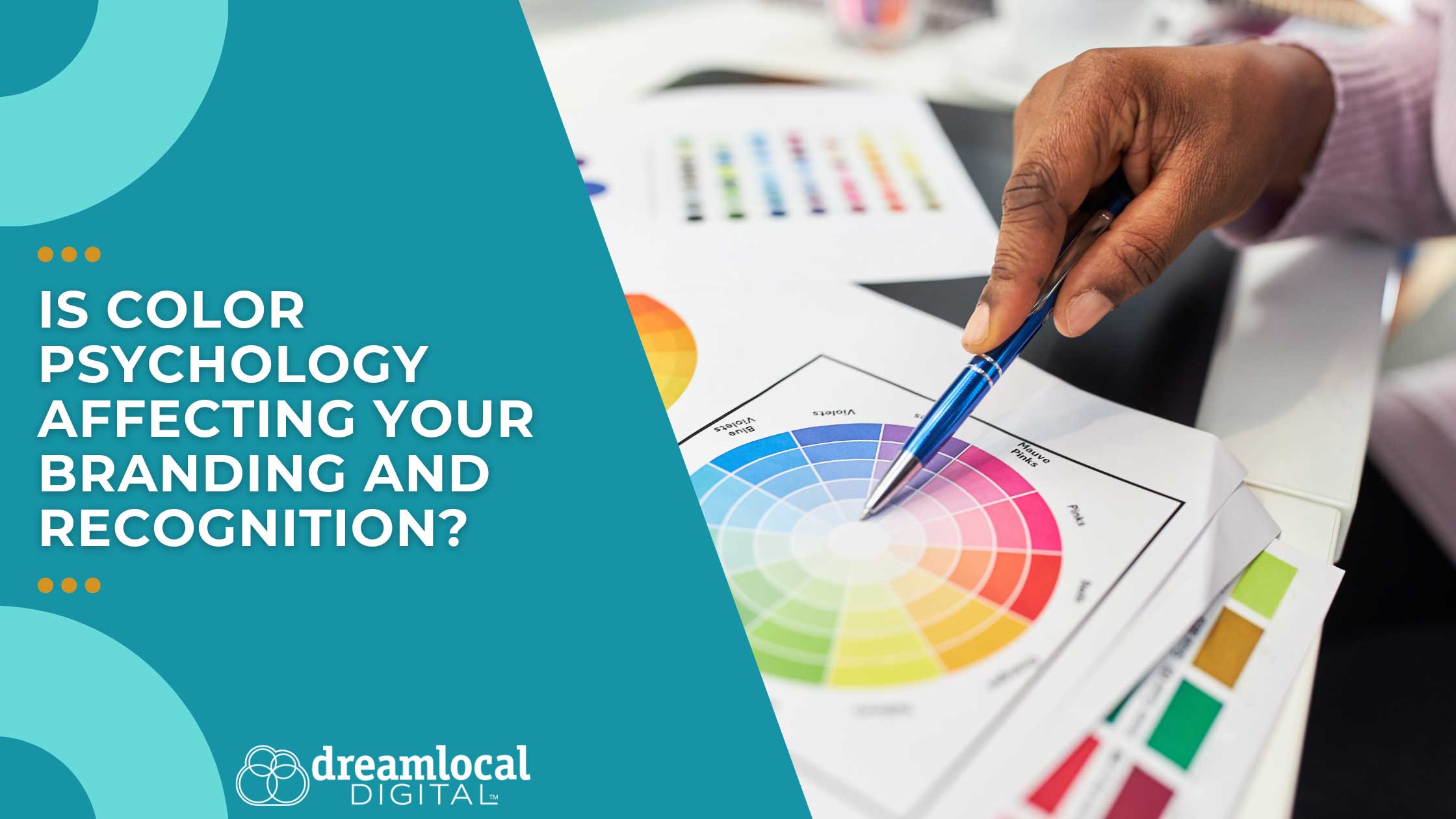Is Color Psychology Affecting Your Branding and Recognition?

Color is a powerful tool in branding, capable of influencing perceptions and emotions. From the vibrant reds of sale banners to the calming blues of financial institutions, colors shape how we view and interact with brands.
Understanding color psychology is essential for marketers, business owners, and digital marketing professionals looking to strengthen brand recognition and create lasting impressions.
The Power of Color in Branding
Colors evoke emotions and associations that can significantly impact a brand’s image. For instance, the color red can trigger feelings of urgency, while blue can foster trust. These subconscious reactions are crucial in how customers perceive a brand, affecting everything from brand loyalty to purchasing decisions.
In digital marketing, where visual elements are often the first touchpoint with potential customers, choosing the right colors can make or break a brand’s identity. Research shows that 62% to 90% of a person’s first impression of products or people is based on color alone.
How Colors Influence Perception
Different colors convey different messages and can be strategically used to align with a brand’s values and objectives. Let’s explore the psychological impact of some common colors in branding:
-
Red: Energy, Passion, Urgency: Red is a dynamic and attention-grabbing color. It’s commonly used in sales promotions and calls to action because it creates a sense of immediacy. Brands like Netflix and Target use red to evoke excitement and stimulate action. In digital marketing, red can highlight important information or inspire quick decision-making.
-
Blue: Trust, Calm, Professionalism: Blue is known for its calming effect and is widely associated with trust, reliability and professionalism. This is why financial institutions, healthcare providers, and tech companies frequently use blue in their branding. Brands like PayPal and American Express utilize blue to communicate stability and security. For businesses in industries where trust is paramount, incorporating blue into branding can enhance credibility and foster customer loyalty.
-
Yellow: Optimism, Happiness, Warmth: Yellow exudes positivity and warmth, making it a popular choice for brands looking to create a friendly and approachable image. Companies like McDonald’s and IKEA use yellow to attract attention and convey happiness. Thanks to its bright and cheerful nature, yellow is also effective for drawing attention to key elements in digital marketing, such as buttons or promotional banners.
-
Green: Health, Tranquility, Nature: Green is the go-to color for eco-friendly brands and companies in the health and wellness sector. Whole Foods and Starbucks use green to emphasize their commitment to sustainability and well-being. In branding, green can appeal to environmentally conscious consumers and convey a sense of balance and harmony.
-
Purple: Luxury, Creativity, Wisdom: Purple is often used by brands that want to project a premium or innovative image. Companies like Cadbury and Hallmark use purple to create an aura of sophistication and exclusivity. Purple can be leveraged to attract a high-end audience or highlight a brand’s unique and creative aspects.
-
Black: Sophistication, Elegance, Authority: Black is frequently used in luxury branding to convey a sense of exclusivity and high quality. Brands like Chanel and Nike utilize black to create a sleek and powerful image. Black can be a strong choice for businesses aiming to project a premium or authoritative brand.
-
White: Simplicity, Purity, Cleanliness: White is often seen in minimalist designs and is popular among brands in the healthcare and technology sectors. Apple and Tesla use white to emphasize clean design and innovation. In branding, white can create a sense of space and clarity, making it an ideal choice for companies that value simplicity and precision.
How Well-Known Brands Use Color Psychology
Well-known brands have mastered the art of using color psychology to reinforce their brand identity and achieve strong brand recognition. For example:
-
Coca-Cola: Red Coca-Cola’s use of red is no accident. The bold red color makes the brand instantly recognizable and evokes excitement and joy, aligning with its branding as a fun and refreshing beverage.
-
Facebook: Blue Facebook’s choice of blue reflects its aim to be a trustworthy and reliable platform for connection. The color blue helps users feel safe while navigating the social network.
-
McDonald’s: Yellow and Red McDonald’s uses a combination of yellow and red to attract attention and create a welcoming environment. The red stimulates appetite and urgency, while the yellow fosters a sense of happiness and friendliness.
-
Starbucks: Green Starbucks’ green logo reflects its commitment to sustainability and environmental consciousness. The green color also creates a calming effect, which aligns with the brand’s emphasis on relaxation and community.
These brands show how deliberate color choices enhance brand recognition and communicate key values to their audience.
Implementing Color Psychology in Your Branding
To harness the power of color psychology in your branding strategy, consider the following tips:
-
Know your audience: Understand the demographics, preferences and values of your target audience. This insight will guide your color choices to ensure they resonate with your customers.
-
Align colors with brand values: Choose colors that reflect your brand’s mission, values and industry. For example, a brand focused on sustainability might prioritize green, while a tech company may lean toward blue for trustworthiness.
-
Consistency is key: Use your chosen colors consistently across all brand touchpoints, including your website, social media, packaging and marketing materials. Consistency helps reinforce brand recognition.
-
Test and adapt: Use A/B testing to see how different colors impact engagement and conversion rates. Don’t be afraid to adapt your color strategy based on data and customer feedback.
Color psychology is crucial in branding and can significantly influence brand recognition. By carefully selecting colors that align with your brand’s identity and values, you can create a powerful visual impact that resonates with your target audience.
Understanding color psychology and using it effectively to influence consumer perception gives your company a competitive edge. Looking for some help with your branding? Contact Dream Local Digital today to learn how we can level up your branding using color psychology.
Newsletter Signup
Stay up to date on the latest digital marketing news, updates, and more. Sign up to receive our newsletter!




